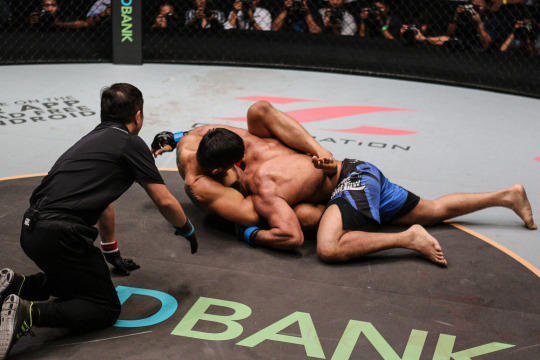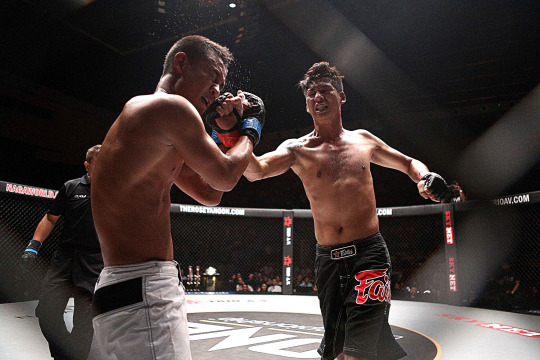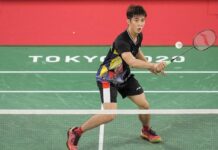Slowly, but surely, the mixed martial arts scene in Myanmar is growing.
ONE Championship will be returning to the country for the third time on Friday Night, 7 October, to stage its upcoming card, ONE: STATE OF WARRIORS, live from the Thuwunna Indoor Stadium in Yangon.
In addition to featuring hometown hero the “Burmese Python” Aung La N Sang, in the local main event, the organization will also hold a single-night elimination tournament featuring six of the nation’s most promising featherweight prospects.
“It’s another step in the right direction,” Aung La states. “It’s good for the company to be marketing the newer guys, and I think it’s going to make them want to train more. It’s definitely the right process.”
Still, the country’s MMA scene is a work in progress. Myanmar has deep roots in combat sports, as there are many exclusive Myanmar martial arts such as the self-defense system of Bando or the traditional wrestling discipline of Naban.
Yet the most popular Myanmar martial art by far is Lethwei, which is an intense, bare-knuckled version of Muay Thai. In fact, Lethwei still reigns supreme as the combat style of choice among the nation’s professional fighters.

“As far as success, MMA is still very primitive and it’s not as big as Lethwei,” Aung La says. “lethwei is very big and everybody watches Lethwei. Even though it’s very big, it’s not a sponsored sport, so it’s kind of hard to make a living just doing lethwei.”
“The competitors are not as high caliber as the Muay Thai fighters in Thailand, but there is a lot of talent in Lethwei,” he continues. “To translate in MMA, you have to have some sort of a ground game, and they don’t have any ground game in Myanmar. That’s the issue.”
Although “The Burmese Python” has spent most of his adult life in the United States acquiring a college education and training in MMA, he has come back to Myanmar a handful of times since the beginning of 2016 to visit friends and family, as well as to evaluate the fight scene.
Since his initial visit, he has noticed the burgeoning industry has made a few strides. “The first time I got there, there were no MMA gyms whatsoever and there was one jiujitsu club, but with five students in it. So the first time I went there, I tried to encourage some of the people to stick with it and keep training,” Aung La recalls.

“When I went back there a couple weeks ago, there is now an MMA gym and it’s run by one of the students who was doing jiujitsu when I was there in March. It’s called Transcend. They have mat space, they have heavy bags, and they have part of the cage, and it’s in the middle of the city, too. So yeah, it’s pretty cool.”
That jiujitsu club the middleweight contender mentioned earlier — Brazilian jiu-jitsu Myanmar (BJJM), which was launched in January 2013 under a previous moniker — now operates out of Transcend Fitness Yangon in the city’s Junction Mawtin district.
Besides the new facility and the growth of the submission art, the country is also producing a slew of homegrown athletes, and six of their best featherweights will be showcased at ONE: STATE OF WARRIORS. Four will be competing in a single-night elimination tournament, with the other two fighting in an alternate bout.
The tournament bracket features undefeated two-fight ONE veteran Phoe Thaw taking on Kat Pali, who is making his MMA debut. Also on the card are Ye Yint Aung, a 2014 Regional Gold Belt Champion who made a successful MMA debut this past March at ONE: UNION OF WARRIORS, squaring off against Saw Yan Paing. In the reserve bout, Saw Ba Oo will fight Kyal Sin Phyo in a battle where both combatants hope to avoid a two-fight losing skid.

While all the aforementioned featherweights have a Lethwei pedigree, Aung La has taken a liking to Phoe Thaw, and had the chance to work with him a few months ago. So far, from what he has seen from the up-and-comer, he’s been very impressed.
“The prospect I’m thinking [of] Phoe Thaw, and this is why,” the middleweight explains. “He has an actual interest in learning jiujitsu. He actually ordered a jiujitsu uniform this morning. He asked if I could bring back some jiujitsu uniforms for him and I’m like, ‘Of course.’ And, for his weight class, he is very tall and long.”
Still, it takes time to effectively round out one’s game, and because of that, Aung La believes it will take another four years before the Myanmar-bred mixed martial artists will develop the ground skills competent enough to hang with the Asian MMA elite.
But, like a true hometown hero, he is willing to do his part to help advance the sport and influence a new generation of fighters.
“I really hope I inspire them to want to learn the art of MMA, and want to learn the ground fighting, but I just want to make sure it inspires them in the right way,” Aung La reveals. “I’m not doing this for fame. I’m not doing this for money. I’m doing this because I’m super passionate about it, and I want to help them more when I can come back after I’m done fighting.”
Though it will be a while before the “Burmese Python” is done fighting, one thing is for sure: the sport is growing in Myanmar, and the country’s MMA scene will be taking another massive step forward this Friday Night.






